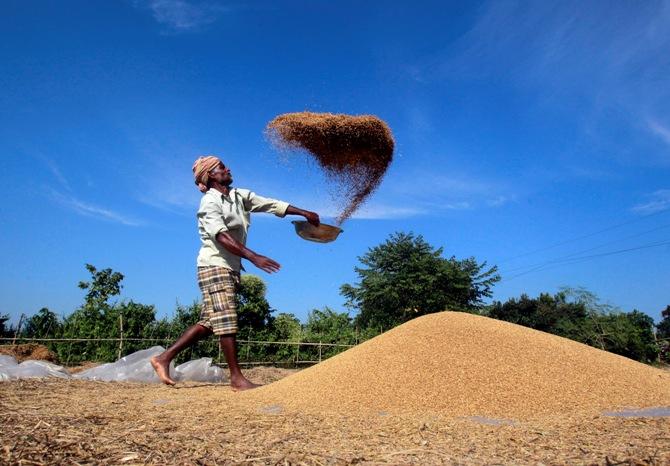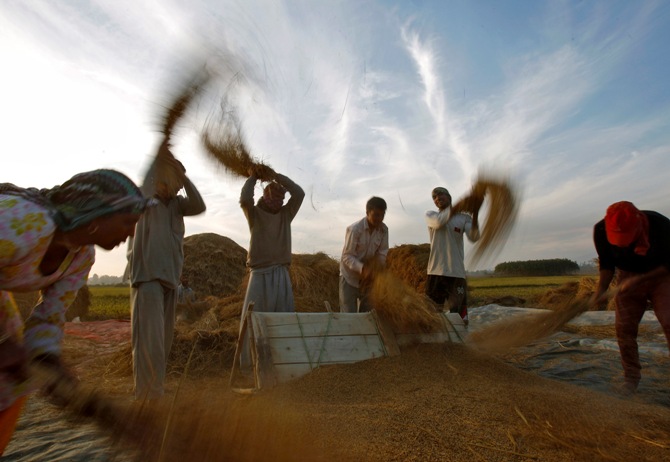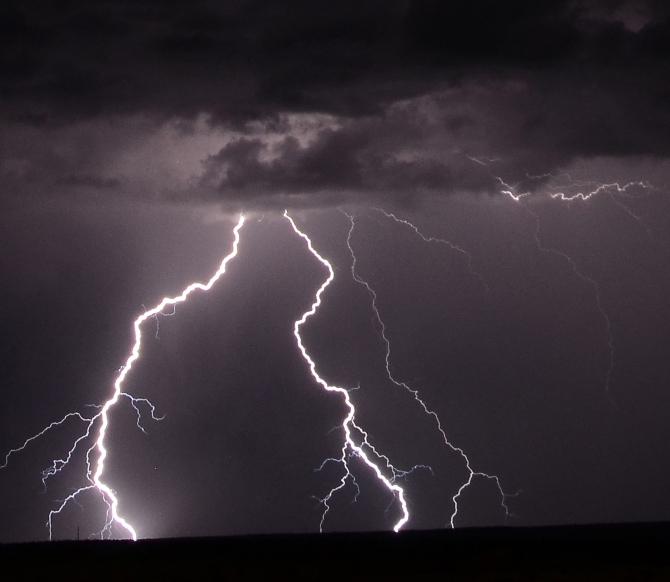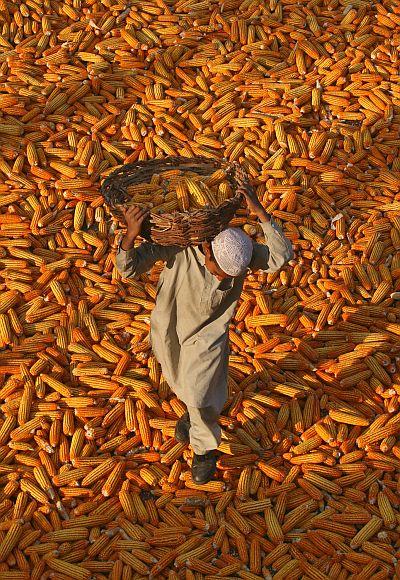 | « Back to article | Print this article |
The economy's El Nino risk
The impact will be felt more on agricultural segments such as seeds, pesticides, micro irrigation and sugar, say Ujjval Jauhari and Vishal Chhabria
With the Australian Metereology department indicating a 70 per cent likelihood of an El Nino occurrence and the below-normal forecast of the Indian Met department, stocks in the rural consumption space could be under pressure.
The impact on farm output and related sectors could lead to economic growth slipping below five per cent in 2014-15, lower than current expectations.
Moody’s in a recent report had said the growth number for FY15 was likely to be five to six per cent.
Typically, the impact will be felt more on agricultural segments such as seeds, pesticides, micro irrigation and sugar.
Kunj Bansal, chief investment officer, Centrum Wealth Management, feels agriculture-dependent sectors and companies in the chemical and fertiliser area will feel the squeeze.
Click NEXT to read further. . .
The economy's El Nino risk
A CIO of a leading domestic asset management firm says companies such as United Phosphorus, GSFC, GNFC, Jain Irrigation and Tata Chemicals could get impacted.
So could sectors such as fast-moving consumer goods and two-wheelers.
Analysts say the revenue cycle for FMCG companies is a function of consumption and industrial slowdown.
So, if the inflation due to supply constraints brought on by El Nino is high, and people have to spend more money on essentials, it would impact consumption-related discretionary spending.
Ambareesh Baliga, managing partner, global wealth management, at Edelweiss Financial Services, says a below-normal monsoon means companies in the fertilisers, pesticides, tractors, two-wheelers and FMCG sectors lose.
Click NEXT to read further. . .
The economy's El Nino risk
The impact of the lower rainfall could also hit industrial production. Says a fund manager, “Power plants and industrial units such as viscose staple fibre will be impacted as they might not have enough water.”
Baliga of Edelweiss says if the El Nino prediction comes true, a lot of the government’s bandwidth will go towards tackling this.
Critical development-related issues could be pushed to the background.
Among companies in addition to the agri space that could get impacted, he said, are Hero MotoCorp, TVS Motor, Mahindra & Mahindra, and the entire FMCG pack.
A recent report from Barclays says the global commodities markets have not fully priced in the risk of an El Nino.
Click NEXT to read further. . .
The economy's El Nino risk
The previous occasion India was impacted, in 2009, inflation had shot up with the nationwide rainfall deficit 23 per cent.
While poor monsoons lead to a four-five percentage point spike in food inflation, the impact in 2009 was severe, with food inflation reaching 21 per cent in March 2010 as compared to 8.7 per cent in April 2009.
Rural demand will moderate and the segments most impacted are consumer non-durables such as food.
Most market watchers await clarity, especially from the Indian Met, which is to give an update on the coming Thursday regarding monsoon arrival.
Economists at Deutsche Bank say El Nino is a necessary condition but not a sufficient one for drought; there are many years when monsoon rains have been late to arrive but have picked up subsequently, to offset the negative impact.
Click NEXT to read further. . .
The economy's El Nino risk
Further, agriculture’s dependence on the summer monsoon has reduced considerably over the years, with kharif (summer) and rabi (winter) crops now contributing equally to overall food production growth.
The quantity and quality of rain distribution will also have a bearing on the impact.
Says an analyst, “If quality is poorer and there is lower rain in well-irrigated areas, the impact will be lower compared to the same happening in areas without proper irrigation.”
Government response will also have a bearing.
Economists at Deutsche Bank feel poor monsoon rain and associated production shortfall can be countered by policy action.
Dhananjay Sinha, head of research at Emkay Global, says the government responded well to the crisis in 2009 and how it responds this time will play a key role.
Click NEXT to read further. . .






